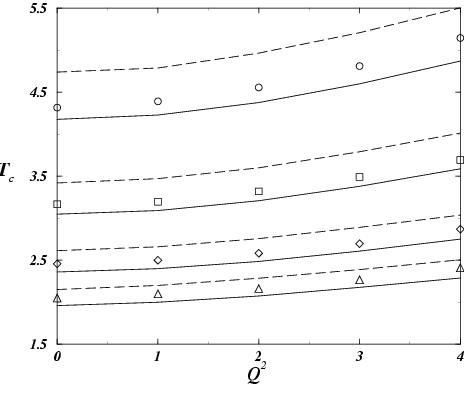Virial coefficients
The compressibility factor of a gas can be expanded in powers
of the density. The coefficients of this expansion receive the
name of virial coefficients. It is possible both to measure
experimentally these virial coefficients, and to calculate
them given a certain intermolecular model. In fact the second
virial coefficient depends on the interaction between pairs of
molecules only. The third virial coefficient depends on the
interaction between three molecules. The only information
required to compute the virial coefficient of a molecule is
the knowledge of the intermolecular forces.
In our group we have computed virial coefficients for a
number of models. Given an intermolecular pair potential we
have computed the virial coefficietns of the model.
In some cases we have been the first to
compute those virial coefficients. Here are some examples:
- Virial coefficients for polymers.
We have determined the second, third and fourth virial
coefficients for polymers formed by a large nomber of monomers
(up to 200). In particular our determination of the third and
fourth virial coefficient of a polymer under good solvent
conditions was the first calculation in the area.
- Determination of the second virial coefficient of two center
Lennard-Jones molecules with an embeded dipole or quadrupole moment.
- Determination of the third virial coefficient of a two center
Lennard-Jones model with an embeded quadrupole moment.
